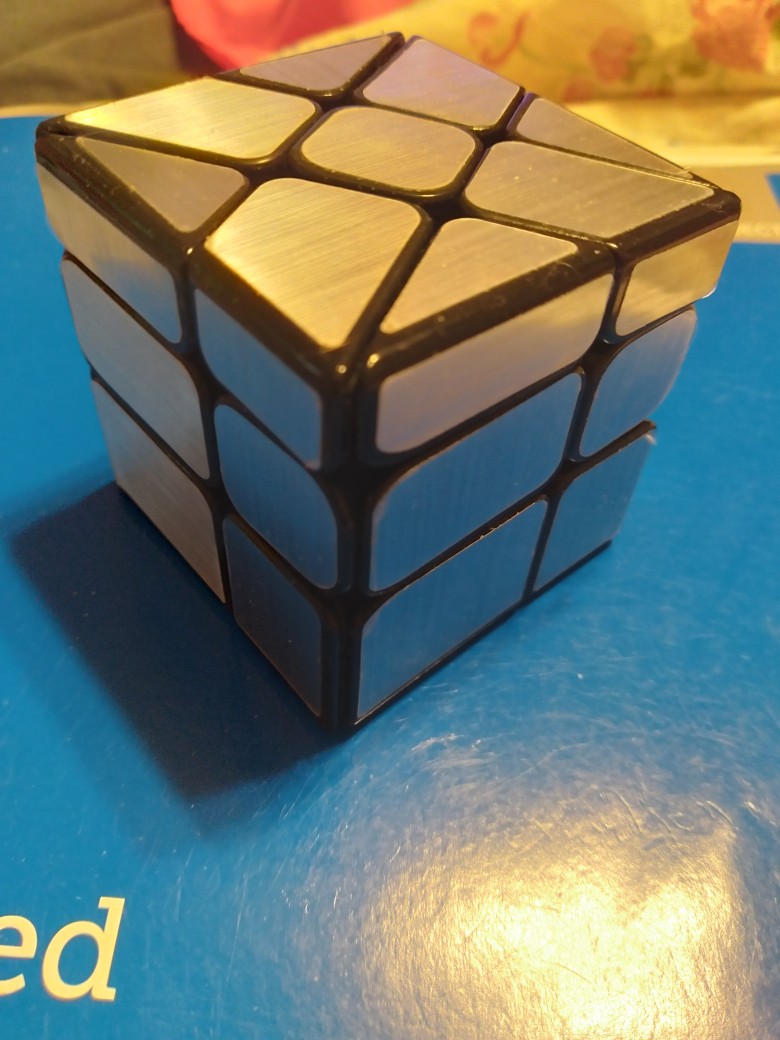

What shapes can you make out of buckyballs?
Most of these pages are devoted to the standard 3×3×3 Rubik cube. There are many other related puzzles, including the 2×2×2 pocket cube, the 4×4×4 super cube, the Rubik tetrahedron, the Rubik Snake, and Rubik's magic. Since all of these puzzles are explorations into various permutation groups, they all lend themselves to the techniques presented here. Still, I concentrate on the standard Rubik cube, because it is the most popular, and in many ways the most interesting. It is difficult enough to pose a significant challenge, yet its complexity is not overwhelming.
I got my first Rubix cube in 1978, and oh I couldn't put it down, not til I solved it. Took a couple of days but I got there. No reading manuals or cheat sheets or anything, all on my own. But first, I had to label it. The colors on the pieces were useless to me. I had a braille dimo writer so it was no trouble to make labels and stick them on. However, as I solved it again and again, with improved procedures, and as my friends played with it, the stickers wore off. Sometimes they even pulled the color paper off as well, so parts of the cube were just black plastic. It was unsustainable. Now advance 45 years. What do I find at a garage sale but a Rubix cube with no colors. The plastic has a silver finish all the way around. The distinguishing factors are the sizes of the pieces. Some pieces are longer, wider, taller, than others. If you turn a face 90 degrees from start, it looks off kilter. It only makes a cube when solved, otherwise it looks like a jumble of plastic rectangles stuck together. The sighted person has almost no advantage here. And there's nothing to wear off, so I can play with it for years to come. This is the coolest Rubix variation I've come across.
There is alsoa a tactile pocket cube, and a tactile slanted cube, where the planes of motion are not parallel to the faces of the cube. Here is the monochrome slanted cube, the "Moyu Fisher Windmill Mirror Cube", when solved. Note the slanted surfaces and the triangular faces.

For all these cubes, the definition of a move has not (to my knowledge) been rigorously established. Clearly the 12 quarter turns are the primary moves, but are the 6 half turns considered moves as well? Some say yes, and some say no. A turn of any face through any angle is one continuous hand motion, so perhaps a 180 degree twist should be considered a single move. On the other hand, if all moves are quarter turns, the problem becomes a bit more tractable (mathematically). For instance, take any scrambled cube and evaluate the parity of its corners, as a permutation within the symmetric group S8. Since each primary move induces an odd permutation on the corners, The answer tells you whether you are an even or an odd number of moves away from start. We don't know how far the cube is from start, since the puzzle has not been completely analyzed, but the parity of the path to start is known.
If you are interested in the underlying mathematics, please read the corresponding chapter of my online book.
Solve your scrambled pocket cube. The solution is optimal, no more than 11 moves.
The underlying software.
Pretty patterns just a few moves from start.
Count the number of possible combinations.
Send feedback to the author of this web site.